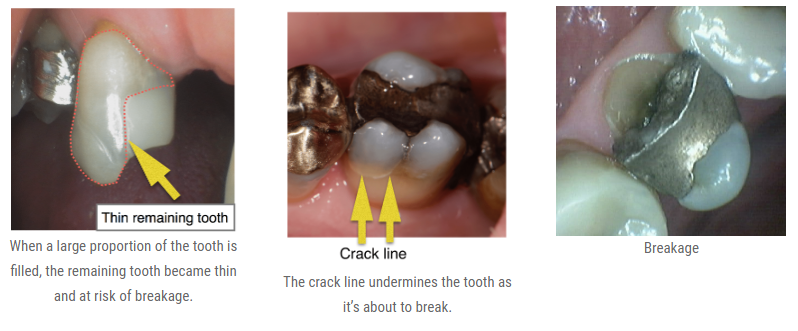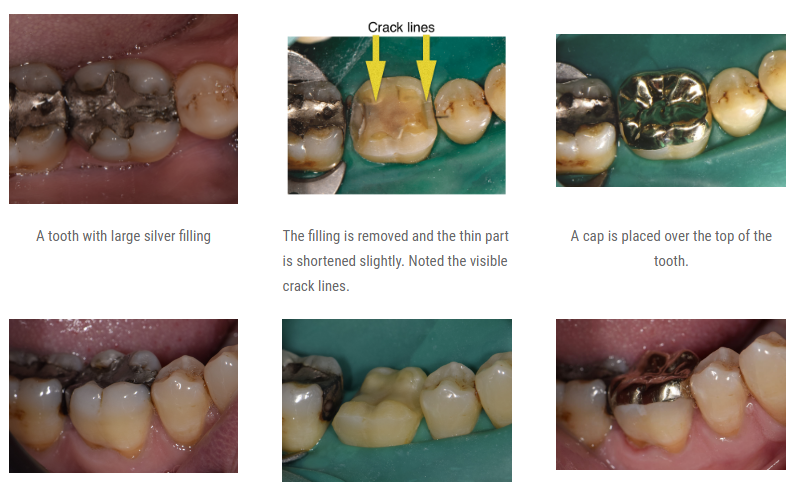In the last post, I talked about how cracks in teeth can have catastrophic effect on teeth. They’ll either break or split teeth. A natural next question would be: what can we do about it? When I said “capping”, I found out that a lot of my patients don’t know what it is and how it prevents them from potential consequences of cracked teeth.
In general, I found that patients and dentists alike used the word “capping” very loosely to communicate different specific dental terms such crowns, onlays, overlays, veneers or even fillings, and this is where the confusion comes in. In my book, I use the term “capping” strictly to describe something that offers “protection” to the teeth. Fillings, as I pointed out in the previous post, DO NOT prevent breakage to the teeth.
So what’s capping? Here’s are the illustrations.
Why do we cap teeth?
The idea behind capping is to make the thin part of the tooth slightly shorter and cover the top of the whole tooth with strong reinforcement. This will prevent the thin part of the tooth from moving and cracking.
The illustrations below show the general procedure of capping.
In the past 10 years or so, dental ceramics have improved significantly which allowed dentists to offer a tooth-coloured alternative to metal caps like the ones below.
Tooth-coloured caps as alternatives to metal ones
Both materials have their own advantages and disadvantages. The decision is best determined based on individual circumstance. The more important point to take away is that capping protects teeth from breakage but there must be teeth left to cap!!
Don’t leave until it’s too late.
To your healthy smile.
Dr. Supa
Supa Dental, Melton.







